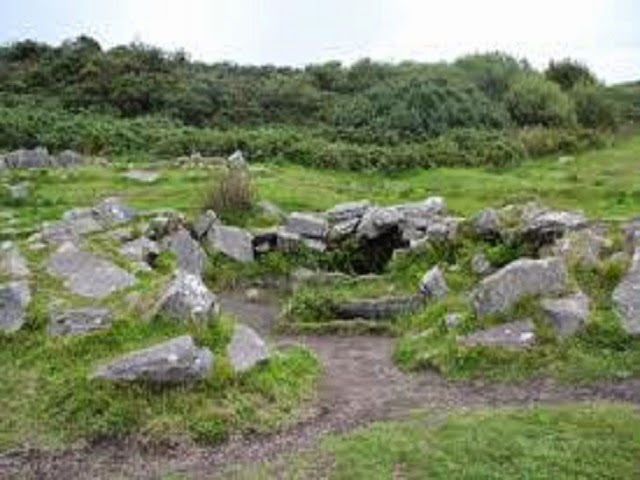Recent NASA Mars images reveal a site eerily reminiscent of Bronze Age structures on Earth.
The comparison in this case is made with the Drombeg site in Ireland.
The similarities are beyond startling.
These are not natural formations.
We do not see the stone circle in the Mars images,perhaps because they were not photographed.
What we do see is on Mars though, is the ruins that look just like
the prehistoric huts and ovens (fulacht fiadh).
Living in our modern world it is easy to forget how things were done in the Bronze Age,
and what they may look like today.
A little info on the Drombeg site for you.
Drombeg stone circle (also known as The Druid's Altar),
is a Recumbent stone circle located east of Glandore, County Cork, Ireland.
Drombeg is one of the most visited megalithic sites in Ireland and is
protected under the National Monuments Act.
The area of the circle has been covered in gravel to protect it from the volume of visitors.
Features
The stone circle consists of seventeen closely spaced stones
spanning 9.3 metres (31 ft) in diameter,
of which 13 survive. The most westerly stone (1.9m long) is
the long recumbentand has two egg shaped cup-marks, one with a ring around it.
A "Cork-Kerry type" stone circle, it is flanked by a pair of 1.8m high
axial portal stones, which provide a south-west axis,
and orientate the monument in the direction of the setting sun during the midwinter solstice.
The stones in the circle have been shaped to slope upwards to the recumbent stone,
the midpoint of which was set in line with the winter solstice sunset viewed in a
conspicuous notch in the distant hills. While the alignment is good, it is not precise.
This is where we see the startling similarity to the site on Mars.
The ruins of two round stone walled conjoined prehistoric huts and a fulacht fiadh
lie just 40m west of the monument.
Evidence suggests the fulacht fiadh was in use up until the 5th century AD.
The larger of the huts had a timber roof supported by a timber post.
The smaller hut had a cooking oven on its east side. A causeway leads from the huts
to the cooking place (fulacht fiadh) featuring a hearth, well and trough in which
water was boiled by adding hot stones.









Comments
Post a Comment